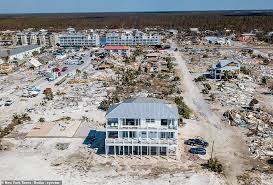The “Moneyball” of Climate Change
The movie “Moneyball” (and the book by Michael Lewis) are based on the story about how the Oakland A’s, which was a losing baseball franchise with a low budget, built a competitive team by recruiting players that other teams had rejected – and spending a fraction of what other teams were paying on players’ salaries.
The key insight of “Moneyball” was that success is not about buying players, it is about buying runs on the scoreboard. In modern “computerese”, a new player-picking algorithm was created. All player assessments were reduced to this one metric – what is the statistical likelihood that a player would get on base.
At the end of the movie, Brad Pitt, the actor portraying the A’s general manager, is offered the GM job by the owner of the World Series winning Boston Red Sox. He is told that his new method of player picking will forever change baseball and, apparently, it did.
“Moneyball” is really a character study about being prepared to buck conformity and is a useful metaphor for how climate data and analytics are or are not being used.
Currently, most industry professionals in banking and commercial real estate are not using the latest data and analytics on floods, natural hazards and climate change in their decision-making. As a result, they tend to under-estimate how more frequent extreme weather events and climate changes hurt current and future valuations and may skew ROI calculations.
Perhaps banking and commercial real estate industries are like the Oakland A’s before GM Billy Beane and his sidekick, a Yale economics major, invented their player-picking algorithm. Is it time for them to buck conformity and bring these new data analytics into their business processes?
As Bob Dylan wrote: “The times they are a’changin’.”
Let’s face it, we’re not living in our parents’ climate. It’s warmer, wetter and more dangerous.
Over the past 40-years, the number of natural disasters causing financial losses in excess of $1 billion has risen steadily. Natural disaster insurance claims were the highest ever in 2017 at $144 billion, and most of the annual losses (a total of $337 billion) were uninsured.
Wildfires in 2017 caused a record $21 billion in losses. The sequence of hurricanes Harvey, Irma and Maria in 2017 caused losses equivalent to 0.5 percent of the nation’s GDP.
Of the top 10 costliest catastrophes ever recorded in the U.S., eight were hurricanes and four of the eight occurred in the past seven years.

Averaged as a whole, the January 2019 global land and ocean surface temperature was 1.58 degrees (Fahrenheit) above the 20th century average and tied with 2007 as the third highest temperature since global records began in 1880. Only the years 2016 (1.91 degrees higher) and 2017 (1.64 degrees higher) were warmer. The 10 warmest Januaries have all occurred since 2002, with the last five years (2015–2019) among the six warmest years in the 140-year record.
In many coastal areas of the U.S., sea level rise-induced tidal flooding has increased up to 250 percent just in the past 20-years.
So, what’s the problem here?
Although the effects of the changing climate are undeniable and significant, very few financial institutions or real estate owners and investors analyze holistic flood, natural hazard, and climate risks to properties, let alone life-of-investment risks from climate change and sea-level rise.
Lenders and investors typically rely only on FEMA 100-year flood maps and Phase I audits in their decisions. FEMA maps and Phase 1 audits are simply not enough for intelligent decision-making.
New automated risk assessment tools now allow lenders, property owners and investors to identify properties that are particularly vulnerable to risks. This enables resources to be focused on vulnerable sites for further risk assessments or management.
FEMA flood maps aren’t good enough
FEMA maps alone aren’t good enough for mortgage lending, buying, selling, protecting, and insuring real assets. The FEMA maps don’t include heavy rainfall flood risks; NOAA storm surge models; climate change – tidal flood/sea-level rise; and, full U.S. fluvial, up-to-date coverages.
Perhaps the harshest evidence of the inadequacy of FEMA maps is Hurricane Michael’s devastation of Mexico Beach in Florida’s Panhandle.
A great number of Mexico Beach homes were in the FEMA X zone and were also clearly in the NOAA storm surge zone. As a result, FEMA, NFIP, the mortgage lenders and insurance agencies all told residents that they were not required to purchase, and in many cases that they did not need to purchase, flood insurance.
Seventy percent of Mexico Beach homes were destroyed and 9 percent were severely damaged.
B-Resilient™ Anyone?
Coastal Risk’s new B-Resilient™ process provides a logical, five-step system that lenders and commercial real estate can easily use to properly value properties, establish accurate ROIs, and plan for risk mitigation investments that will accelerate resilience and make buildings safer.
This system begins with a portfolio level, qualitative assessment of hazards and risks, damage/loss, and estimated costs of adaptation. Then, the process uses a “resilience microscope” to drill down into individual property risks, economic loss estimates, specific adaptation investments and, finally, recommended adaptation solutions.
What Should Lenders and Commercial Real Estate Do?
As a result of the recent availability of fast, accurate and affordable climate data and flood analytics, mortgage lenders and commercial real estate should begin to use the tools discussed above.
By more closely examining these risks, the business case for resilience-enhancing investments will become clearer and, as a result, our workplaces and factories, our office buildings and homes, and, as a consequence, our societies, will all become safer and stronger from the bottom up.
For further information, contact: customerservice@coastalriskconsulting.com. www.floodscores.com. 844-732-7473.
Albert J. Slap is President and Co-Founder of Coastal Risk Consulting, LLC, a geospatial technology, modeling and data analytics company located in Boca Raton, Fla.
“The Invading Sea” is a collaboration of four South Florida media organizations — the South Florida Sun Sentinel, Miami Herald, Palm Beach Post and WLRN Public Media.



